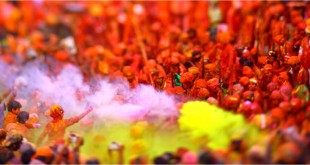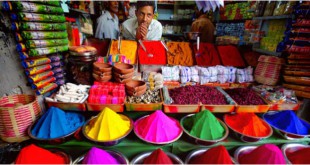 Everybody has seen a spider’s web, and admired the skull which the spider has in web making. We know that the substance used in web making is silk, which the spider makes, and that it uses this silk not only for webs but for a whole variety of other purposes. We also know that the type of web varies very much from spider to spider, but have you ever wondered how the spider spins this silk? In the spider’s belly, or abdomen, are certain glands which produce the silk as a liquid. At the tip of the abdomen are spinning organs, which have many holes in them. The liquid silk is forced through these tiny holes, making it very fine and delicate, and then on contact with the air the silk becomes solid. There are different sorts of silk for different purposes – best known is the sticky silk used in webs to trap the insects which the spider eats. Then there is the non-sticky, stronger silk for the spokes of the web, which the spider used to walk along – had you ever wondered why the spider never gets caught in its own web? There is yet another sort of silk, which is used for spinning the cocoon in which the spider’s eggs are kept safe and warm until they hatch, and other sorts for making the ropes which spider uses for climbing down from high places. So don’t dismiss the common spider as just another animal – in fact, the spider is a master at its art and ought to be treated with a lot more respect.
Everybody has seen a spider’s web, and admired the skull which the spider has in web making. We know that the substance used in web making is silk, which the spider makes, and that it uses this silk not only for webs but for a whole variety of other purposes. We also know that the type of web varies very much from spider to spider, but have you ever wondered how the spider spins this silk? In the spider’s belly, or abdomen, are certain glands which produce the silk as a liquid. At the tip of the abdomen are spinning organs, which have many holes in them. The liquid silk is forced through these tiny holes, making it very fine and delicate, and then on contact with the air the silk becomes solid. There are different sorts of silk for different purposes – best known is the sticky silk used in webs to trap the insects which the spider eats. Then there is the non-sticky, stronger silk for the spokes of the web, which the spider used to walk along – had you ever wondered why the spider never gets caught in its own web? There is yet another sort of silk, which is used for spinning the cocoon in which the spider’s eggs are kept safe and warm until they hatch, and other sorts for making the ropes which spider uses for climbing down from high places. So don’t dismiss the common spider as just another animal – in fact, the spider is a master at its art and ought to be treated with a lot more respect.
Check Also
Abir Gulaal: 2025 Fawad Khan Hindi Rom-Com Film, Trailer, Review
Movie Name: Abir Gulaal Directed by: Aarti S. Bagdi Starring: Fawad Khan, Vaani Kapoor, Riddhi …
 Kids Portal For Parents India Kids Network
Kids Portal For Parents India Kids Network






